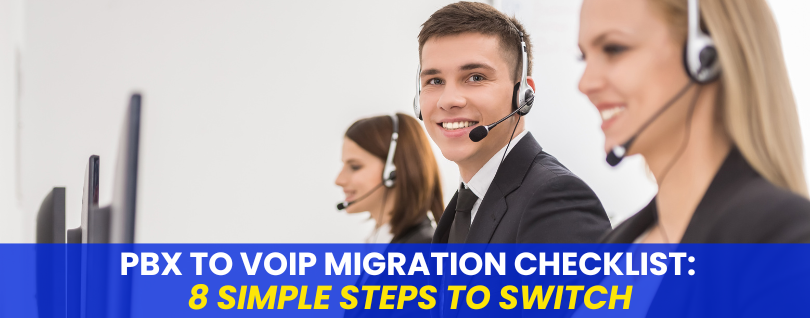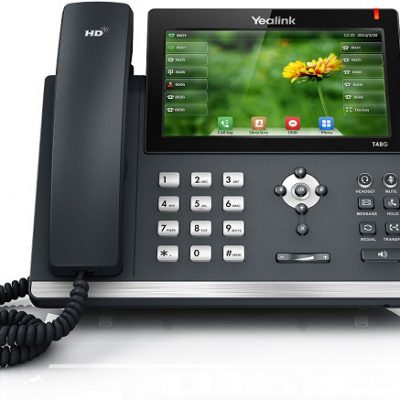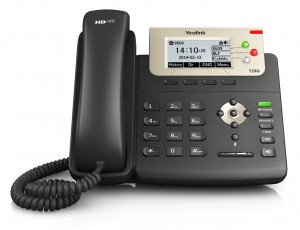The rise of VoIP technology has led to an increasing number of businesses making the switch from traditional PBX systems to modern cloud-based solutions. With the promise of cost savings, advanced features, and flexibility, it’s no wonder that VoIP has become the preferred choice for business communication.
In this checklist, we will outline eight simple steps that businesses should follow when migrating from PBX to VoIP. These steps will help you prepare for the switch, minimize disruptions, and ensure that your business is ready to take advantage of the benefits of VoIP. So, let’s get started!
Key Takeaways
- PBX to VoIP Migration Checklist: 8 Simple Steps to Switch is a comprehensive guide that outlines the steps required to migrate from a traditional PBX phone system to a VoIP phone system.
- The guide provides a checklist of 8 simple steps that you need to consider when migrating from a PBX to a VoIP network.
- This guide is an essential resource for network professionals who are looking to migrate from a PBX to a VoIP system.
Signs You Should Switch from PBX to VoIP
VoIP technology has been around for a while now, and it is becoming increasingly popular for businesses of all sizes. If you are still using a traditional PBX system, it might be time to consider making the switch to VoIP.
Here are some signs that indicate it’s time for you to migrate from PBX to VoIP:
1. Cost
One of the most significant advantages of VoIP technology is that it is cost-effective. If you are finding that your current PBX system is costing you more than it should, then it’s time to start thinking about a migration to VoIP. VoIP systems are generally cheaper to install and maintain than traditional PBX systems, and they offer more features and functionality.
2. Scalability
If your business is growing, you need a phone system that can grow with you. A PBX system can be challenging to scale up or down, whereas a VoIP system can be easily scaled up or down as per your business needs. With a VoIP system, you can add or remove lines as needed, and you can also add new features and functionality as your business grows.
3. Flexibility
VoIP systems offer much greater flexibility than PBX systems. With a VoIP system, you can make and receive calls from anywhere in the world as long as you have an internet connection. You can also use a variety of devices, including smartphones, tablets, and laptops. This flexibility makes it easier for your employees to work remotely, which can be a significant advantage in today’s business world.
4. Integration
VoIP systems can be easily integrated with other business applications, such as CRM systems and email clients. This integration can help streamline your business processes and make your employees more productive. A PBX business phone system, on the other hand, can be challenging to integrate with other applications.
5. Maintenance
Maintaining a PBX system can be time-consuming and expensive. With a VoIP system, most of the maintenance is done remotely, which means you don’t have to worry about on-site visits from technicians.
The 8 Steps to Consider for PBX to VoIP Migration
Migrating from PBX to VoIP can be a daunting task, but with the right checklist in hand, it can be a smooth transition. In this section, we will discuss the eight steps that businesses should consider when migrating from PBX to VoIP.
Step 1: Evaluate Your Current Network Infrastructure
Before starting the migration process, it’s important to evaluate your current network infrastructure to ensure that it can handle the new VoIP system. This includes assessing your bandwidth, network capacity, and any potential network issues that may arise during the migration process.
Step 2: Form a Cross-Functional Team
Migrating to VoIP requires a cross-functional team that includes IT, network engineers, and business leaders. This team should be responsible for planning, executing, and monitoring the migration process.
Step 3: Choose the Right VoIP Provider for You
Choosing the right VoIP provider is crucial to the success of your migration. Look for a provider that offers reliable service, has a good reputation, and provides excellent customer support.
Step 4: Pick the most Suitable Devices
When migrating to VoIP, it’s important to choose the right devices that are compatible with your new system. This includes selecting the right phones, headsets, and other hardware that will work seamlessly with your new VoIP system.
Step 5: Craft Your Migration Strategy
Crafting a migration strategy is critical to the success of your migration. This includes developing a project plan, identifying key milestones, and outlining the steps that need to be taken to ensure a smooth transition.
Step 6: Facilitate Training Workshops
Training workshops are essential to ensure that your employees are comfortable with the new VoIP system. This includes providing training on how to use the new devices, make calls, and how to troubleshoot any issues that may arise.
Step 7: Evaluate the Security Measures
Security is a critical component of any VoIP system. When migrating from PBX to VoIP, it’s important to evaluate your security measures to ensure they are up to par. This includes assessing your firewalls, encryption, and other security measures.
Step 8: Do the Final Testing
Before going live with your new VoIP system, conduct final testing to ensure that everything is working properly. This includes testing your devices, network, and any other components of your new system.
Frequently Asked Questions
Is VoIP Cheaper than PBX?
VoIP is generally cheaper than PBX, especially in the long run. PBX requires a lot of hardware and infrastructure, which can be expensive to install and maintain. On the other hand, VoIP uses the internet to make and receive calls, which is much cheaper than traditional phone lines. Additionally, VoIP providers often offer flexible pricing plans that allow businesses to pay only for what they need.
Is PBX Obsolete?
PBX is not necessarily obsolete, but it is becoming less common as more businesses switch to VoIP. PBX systems require a lot of hardware and infrastructure to set up and maintain, which can be expensive and time-consuming. VoIP, on the other hand, is much simpler and more flexible, making it a more attractive option for many businesses.
Is it Worth Switching to VoIP?
Switching to VoIP service can be a good idea for many businesses, especially those looking to save money on their phone bills or improve their communication capabilities. With VoIP, businesses can take advantage of features like video conferencing, instant messaging, and virtual phone numbers. Additionally, VoIP is generally much cheaper than PBX, making it a cost-effective option for businesses of all sizes.
Do People Still Use PBX?
Yes, people still use PBX, but it is becoming less common as more businesses switch to VoIP. PBX systems require a lot of hardware and infrastructure to set up and maintain, which can be expensive and time-consuming. VoIP, on the other hand, is much simpler and more flexible, making it a more attractive option for many businesses.
Conclusion
In conclusion, migrating from a PBX to a VoIP system can be a complex process, but it can also bring numerous benefits to a business. By following the eight simple steps outlined in this checklist, the migration can be made smoother and less disruptive to the organization.
With CallSprout You can Easily Migrate from PBX to VoIP
Migrating from PBX to VoIP can be a daunting task, but with CallSprout, it’s a breeze. CallSprout provides a comprehensive solution that covers all aspects of the migration process. From planning to implementation, CallSprout ensures a smooth transition to VoIP.
CallSprout offers a range of features that make the migration process simple and efficient. With CallSprout, you can easily port your existing phone numbers, set up call routing, and configure your phone system to meet your specific needs.
To ensure a successful migration, CallSprout follows a PBX to VoIP migration checklist that includes the following steps:
- Assessment: CallSprout assesses your current phone system and identifies the best approach for migrating to VoIP. This includes evaluating your current hardware and software, network infrastructure, and call volume.
- Planning: CallSprout creates a detailed migration plan that outlines all the steps involved in the migration process. This includes setting up a timeline, identifying potential issues, and outlining the roles and responsibilities of each team member involved in the migration.
- Training: CallSprout provides comprehensive training to ensure that your team is prepared for the migration. This includes training on the new phone system, call routing, and other features.
- Testing: CallSprout conducts rigorous testing to ensure that the new phone system is working properly. This includes testing call quality, call routing, and other key features.
- Implementation: CallSprout handles the implementation of the new phone system, ensuring a smooth transition from PBX to VoIP.
- Ongoing Support: CallSprout provides ongoing support to ensure that your new phone system continues to operate smoothly. This includes troubleshooting any issues that arise and providing regular maintenance to keep your system up to date.
Contact us today to learn more!






